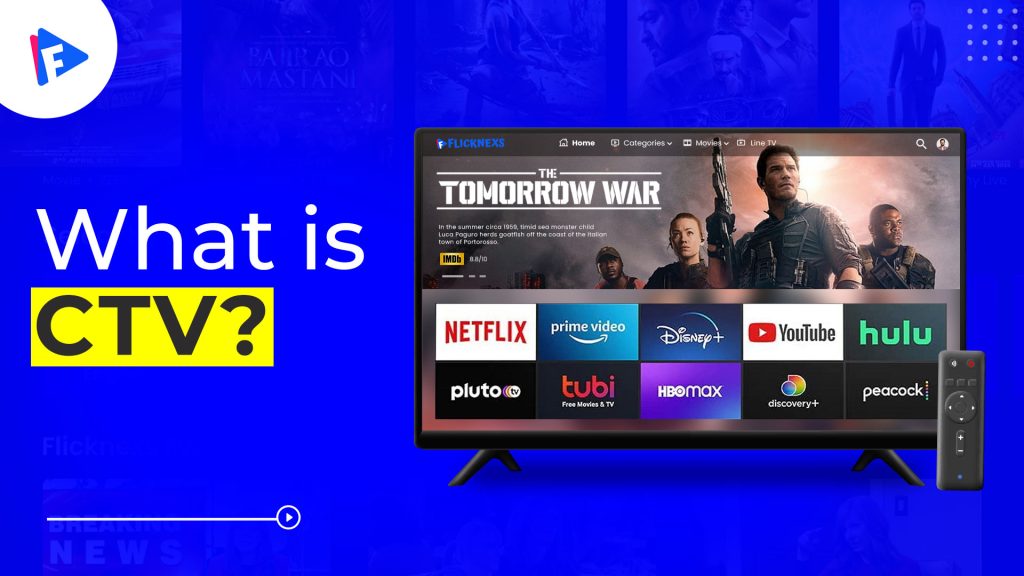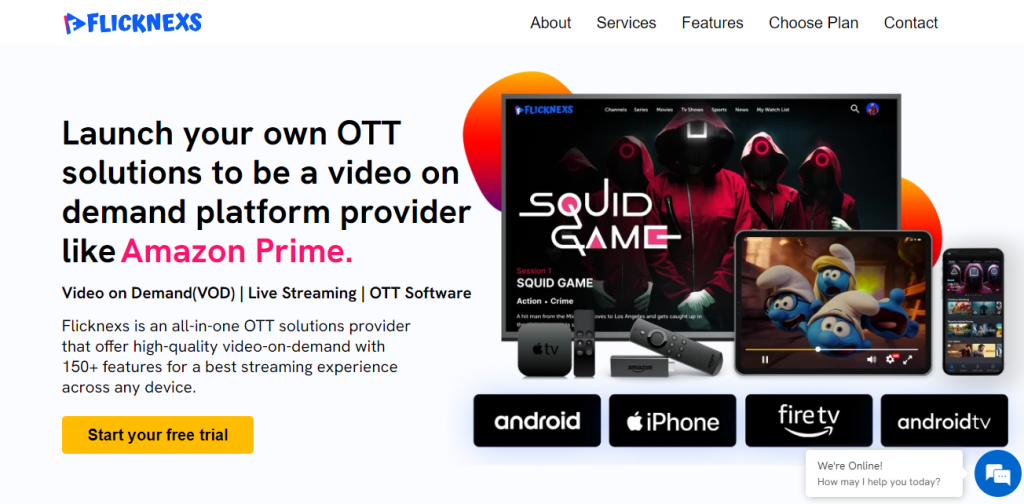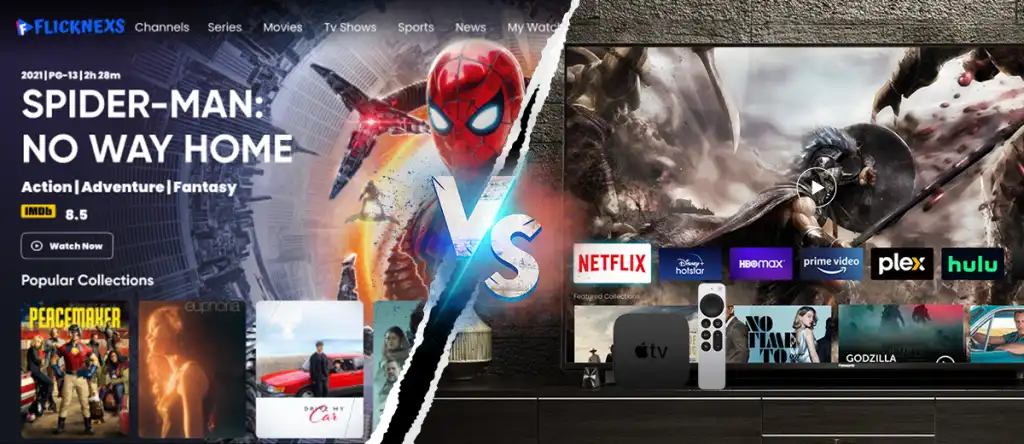As more marketers explore the benefits of OTT and CTV advertising, it’s natural to run into unfamiliar terms during a quick Google search, especially for those just starting out. In a recent survey, we found that while 36% of respondents have a basic understanding of Connected TV ads, another 31% are still in the testing phase—experimenting but not yet fully investing in this rapidly growing channel.
That means more than three-quarters of marketers are only beginning to realize the full potential of OTT and CTV as a performance-driven, direct-response marketing strategy that delivers measurable results—straight to the big screen.
What is OTT?
OTT stands for “Over the Top“ referring to a digital media distribution model that delivers video content over the internet directly to viewers without the need for traditional broadcast or cable networks.
It allows users to stream video content on various devices, such as smartphones, tablets, smart TVs, and computers, bypassing the need for a cable or satellite TV subscription.
OTT platforms provide a wide range of on-demand content, including movies, TV shows, documentaries, and original series, often through subscription-based services like Netflix, Amazon Prime Video, or Hulu.
With the increasing popularity of OTT, viewers have greater control over what they watch and when, as well as the flexibility to personalize their viewing experience.
What is CTV?

CTV stands for Connected TV. It refers to television sets or devices that are connected to the internet, allowing users to stream digital content and access online services.
CTV combines the traditional TV experience with the advantages of the internet, providing a wide range of on-demand content, interactive features, and personalised viewing options. Unlike the usual TV channels, Connected TV (CTV) lets people watch streaming services like Netflix, Hulu, and Amazon Prime Video.
It also allows them to use apps and visit websites. Because CTV has become popular, advertisers are using it too. They’re using programmatic advertising and data-driven targeting to show their ads to specific groups of people.
Benefits of OTT and CTV
What Are the Key Benefits of OTT and CTV Advertising?
Convenience: OTT (Over-The-Top) services offer on-demand streaming, allowing viewers to watch content whenever and wherever they want.
Variety: A wide range of content genres, from movies and TV shows to documentaries and original series, caters to diverse tastes.
Cost-Effective: OTT platforms often provide affordable subscription options, eliminating the need for expensive cable TV packages.
Personalization: Algorithms recommend content based on user preferences, enhancing the viewing experience.
Accessibility: OTT services are accessible on multiple devices, including smartphones, tablets, and smart TVs.
Benefits of CTV
Targeted Advertising: CTV allows precise audience targeting, enhancing ad relevance.
Broad Reach: It reaches a vast and diverse viewer base through internet-connected devices.
Interactivity: Viewers can engage with ads through clicks or interactions.
Analytics: Detailed data on viewership and engagement provides valuable insights.
Cost-Effective: CTV offers cost-efficient ad delivery compared to traditional TV.
Flexibility: Advertisers can adjust campaigns in real-time for optimal results.
How Did OTT and CTV Advertising Evolve Over Time?
History of OTT
Over-the-Top, refers to the delivery of video, audio, and other media content over the internet, bypassing traditional distribution channels such as cable or satellite television. The history of OTT can be traced back to the early 2000s when internet speeds and broadband penetration began to improve significantly.
Netflix, founded in 1997 as a DVD rental service, played a crucial role in popularising OTT. In 2007, Netflix introduced its streaming service, allowing subscribers to stream content online. This marked a turning point in the entertainment industry, leading to the rise of other OTT platforms like Hulu, Amazon Prime Video, and Disney+.
The rapid spread of smart gadgets, like smartphones and smart TVs, has sped up the expansion of over-the-top (OTT) services. These devices have made it simple for people to get to OTT content, letting them enjoy videos and other media whenever and wherever they prefer.
The success of OTT platforms can be attributed to their personalised content recommendations, affordability, and convenience. As a result, traditional media providers had to adapt by launching their own OTT services or partnering with existing platforms.
Today, OTT has become a dominant force in the entertainment industry, revolutionising how content is created, distributed, and consumed, giving viewers a wide array of choices and transforming the way we experience television and movies.
History of CTV
Connected Television has a relatively recent history that has significantly transformed the way people consume media. It emerged as a result of advancements in internet connectivity and the integration of streaming services with television sets.
CTV refers to the ability to access video content through internet-connected devices such as smart TVs, streaming devices, and gaming consoles.
The rise of CTV can be traced back to the early 2010 when platforms like Roku, Apple TV, and Google Chromecast gained popularity. These devices allowed users to stream content from various online platforms, including video-on-demand services and live TV channels.
As internet speeds improved and streaming services expanded, CTV became more accessible and mainstream.
Today, CTV has become a dominant force in the media landscape, providing viewers with a wide range of content options and personalised viewing experiences. It has also opened new avenues for advertisers, enabling targeted and interactive advertising campaigns.
With its convenience and flexibility, CTV continues to reshape the entertainment industry, marking a significant shift from traditional broadcast television.
What Is the Difference Between OTT and CTV?
| Aspect | CTV (Connected TV) | OTT (Over-the-Top) |
| Definition | Refers to televisions connected to the internet | Refers to content delivered over the internet |
| Delivery | Delivered through an internet-connected device | Delivered through any device with an internet connection |
| Device Examples | Smart TVs, gaming consoles, streaming devices | Smartphones, tablets, computers, streaming devices |
| Content Access | Accessed through pre-installed apps or channels | Accessed through standalone apps or streaming platforms |
| Content Types | Includes both traditional TV and streaming content | Primarily focuses on streaming content |
| Monetization | Advertising-supported and subscription-based | Primarily advertising-supported or subscription-based |
| Targeting | Enables precise audience targeting for ads | Offers audience targeting options for advertisers |
| Measurement | Provides more accurate measurement and analytics | Offers measurement and analytics capabilities |
Read to know about OTT vs IPTV
How Flicknexs Helps in OTT and CTV

Flicknexs is a platform designed to assist in the management and distribution of content for OTT and CTV services. It offers various features and capabilities that can benefit businesses in the OTT and CTV space. Here are some ways in which Flicknexs helps in OTT and CTV.
Content Management: We provides a user-friendly interface for content creators and distributors to manage their digital content. This includes organizing, categorizing, and updating content libraries, making it easy to maintain a vast catalog of videos, movies, TV shows, and more.
Monetization Options: We offers various monetization models, such as subscription-based services, pay-per-view, advertising, and rental options. This flexibility allows content providers to choose the revenue model that best suits their business goals.
Cross-Platform Compatibility: We supports multiple platforms and devices, including smart TVs, mobile devices, and web browsers. This cross-platform compatibility ensures that content can be accessed by a wide range of viewers.
Analytics and Insights: This platform provides detailed analytics and viewer insights, allowing content providers to understand user behaviour, preferences, and engagement.
Customization and Branding: Users can customize their OTT and CTV apps with their branding and design, creating a unique and engaging user experience. This branding helps build a strong identity for the service.
Multi-Language and Subtitle Support: To reach a global audience, Flicknexs allows content providers to offer content in multiple languages and provides subtitle support, making content more accessible to a diverse viewer base.
Content Recommendations: Flicknexs can implement recommendation algorithms to enhance user engagement by suggesting content that aligns with a viewer’s preferences, leading to increased content consumption.
Conclusion
Through OTT and CTV publishers enjoy the benefits of targeting customers all at once, with high-quality content and branding that offers brand safety.
In addition, publishing through these channels provides publishers with the opportunity to track the metrics of their campaigns in order to understand engagement and the effectiveness of their advertising.
With the growing popularity of OTT and CTV advertising for publishers, these platforms will undoubtedly help to draw larger ad spending and continue to increase their market share.



Leave a Reply